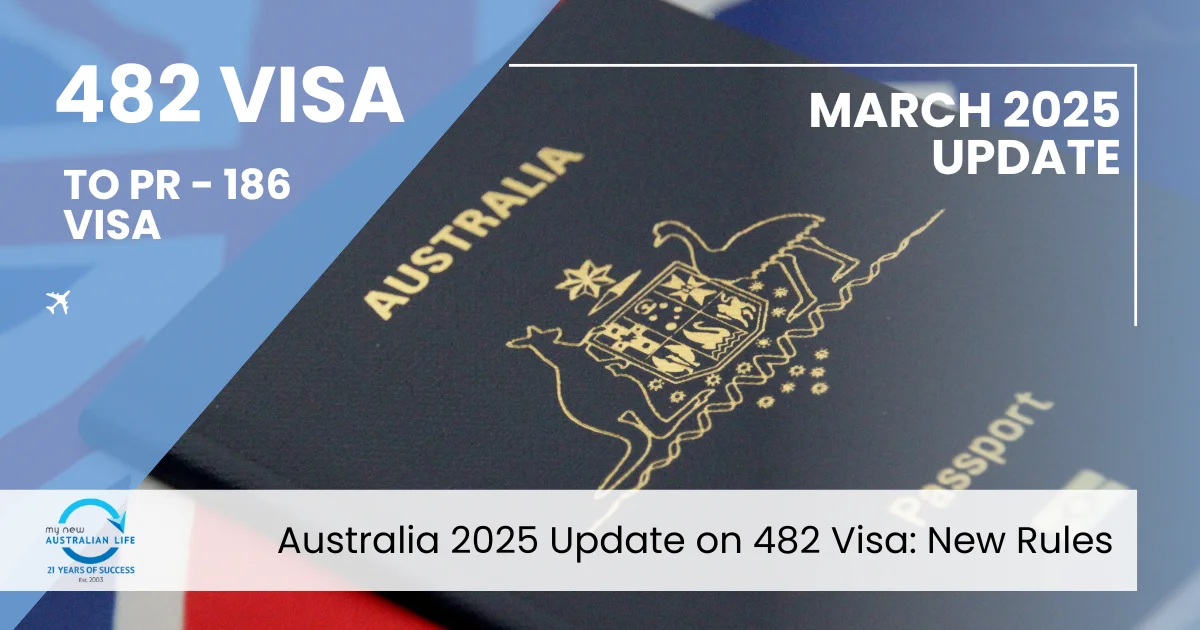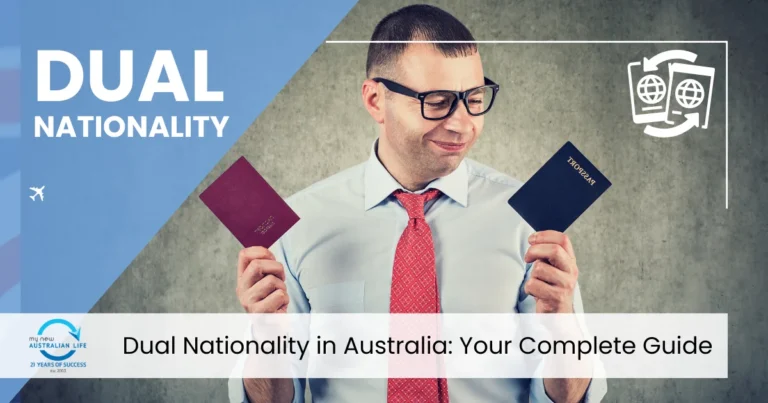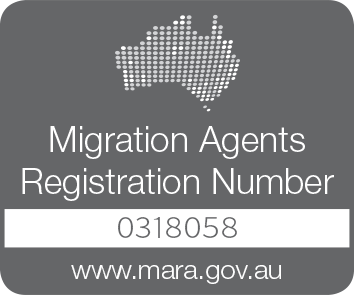New 482 Visa Changes at a Glance (2025 Update)
Effective March 31, 2025, holders of TSS 482 visas may apply for the Employer Nomination Scheme (ENS) 186 visa to become permanent residents if their occupation is on the Medium-Term list, they have been employed by the same company for two years, they are under 45, and they meet the English language requirements (IELTS 6 in each band or equivalent).
Occupation List: To qualify for the ENS 186 visa, your occupation must be included in the Medium-Term list.
Work Experience: You are required to have been employed by the same organization for a minimum of two years while holding your TSS 482 visa.
English Language Requirement: It is necessary to fulfill the English language criteria, which generally entails obtaining an IELTS score of 6 in each band or an equivalent assessment.
Age Requirement: Applicants must be under 45 years of age at the time of submitting their application for permanent residency.
Closely Related Occupation: When evaluating work experience for the 186 visa, ensure that you are referencing the appropriate version of the ANCO (Australian National Classification of Occupations) to confirm that your occupation is closely related to the one you are using as a basis.
Casual and Part-Time Experience: Casual and part-time work experience may be considered on a pro-rata basis; however, the experience claimed must have been completed.
Key Changes Under the Skills in Demand (SID) Visa (2025)
Australia has introduced major changes to its skilled migration program, replacing the Temporary Skill Shortage (TSS) visa (subclass 482) with the new Skills in Demand (SID) visa. This change is aimed at addressing skill shortages, streamlining migration pathways, and improving access to permanent residency for skilled workers. The new SID visa introduces new pathways for workers based on their skill level, salary, and occupation.
The SID visa brings significant modifications to the previous 482 visa structure, making it more accessible and flexible for skilled workers. Here are the key updates:
- Three-Tier Visa Structure:
- Specialist Skills Pathway: This pathway is designed for highly skilled workers earning over $135,000 per year. It offers a streamlined processing time of just seven days, making it the fastest route for skilled migration.
- Core Skills Pathway: Workers in high-demand occupations must meet the Temporary Skilled Migration Income Threshold (TSMIT) of $70,000. This pathway supports industries with ongoing skill shortages.
- Essential Skills Pathway: This option is tailored for lower-paid workers in critical sectors such as aged care and hospitality. Full details of this pathway are expected to be announced in mid-2025.
- Reduced Work Experience Requirement:
- Previously, applicants needed at least two years of work experience in their occupation. With the new SID visa, this requirement has been reduced to just one year, making it easier for skilled workers to qualify.
- Enhanced Worker Mobility:
- Under the previous 482 visa, workers had only 60 days to find a new employer if they lost their job. The SID visa has extended this period to 180 days, giving visa holders more time to secure new employment.
- Pathways to Permanent Residency (PR):
- Short-term visa holders now have the opportunity to transition to permanent residency after two years of working in Australia. This is a significant improvement from the older visa system, which restricted PR eligibility for some workers.
What is the Skills in Demand (SID) Visa?
The Skills in Demand (SID) visa is Australia’s updated skilled migration visa, replacing the previous TSS 482 visa. It retains employer sponsorship requirements but introduces a more structured system to ensure the right workers fill the right job gaps. The three-tiered approach ensures high-skilled professionals, core skilled workers, and essential sector employees can all find migration pathways suited to their qualifications and experience.
Comparison: 482 Visa vs. Skills in Demand Visa (2025 Update)
| Feature | 482 Visa (Old) | SID Visa (2025) |
|---|---|---|
| Work Experience | 2 years | 1 year |
| Pathway to PR | Limited | Available after 2 years |
| Salary Threshold | $70,000 (TSMIT) | Varies by pathway ($70,000 – $135,000) |
| Visa Validity | 2 – 4 years | Tier-dependent |
| Job Mobility | 60 days to find a new employer | 180 days to find a new employer |
Eligibility Criteria for the SID Visa (2025)
To be eligible for the new SID visa, applicants must meet several important requirements:
- Sponsorship: Secure sponsorship from an approved Australian employer.
- Salary Threshold: Meet the salary threshold set for their specific pathway.
- Work Experience: Have at least one year of work experience in a relevant occupation.
- Health & Character Requirements: Satisfy the standard health and character requirements.
Meeting these criteria ensures that applicants align with Australia’s skilled migration goals and contribute effectively to the workforce.
How to Apply for the SID Visa (2025 Guide)
The application process for the SID visa involves several steps:
- Secure a job offer from an Australian employer who is authorized to sponsor skilled workers.
- Undergo a skills assessment, depending on occupation and visa pathway.
- Submit the visa application through the Department of Home Affairs website.
- Processing times vary by pathway, with the Specialist Skills Pathway offering approvals in just seven days.
Frequently Asked Questions (FAQs) – 2025 Update
1. Can I apply for PR directly from the SID visa?
- Yes, after working in Australia for two years under the SID visa, eligible workers can apply for permanent residency.
2. What happens if I lose my job on an SID visa?
- If you lose your job, you have 180 days to find a new employer before your visa becomes invalid. This gives workers greater flexibility and job security.
3. Are the occupation lists changing in 2025?
- Yes, the Core Skills Pathway will have an occupation list that is updated regularly to reflect Australia’s workforce needs. However, the Specialist Skills Pathway will not rely on an occupation list.
4. What is the minimum salary requirement?
- The minimum salary requirement depends on the visa pathway. The TSMIT is $70,000 for the Core Skills Pathway, while the Specialist Skills Pathway requires at least $135,000 per year.
5. Can family members accompany me on the SID visa?
- Yes, you can include dependent family members in your visa application, allowing your spouse and children to live and work in Australia with you.
The introduction of the Skills in Demand (SID) visa represents a major shift in Australia’s migration system for 2025. The new visa offers easier PR pathways, lower experience requirements, and improved job mobility, making it an attractive option for skilled workers worldwide. If you are considering migrating to Australia for work, now is an excellent time to explore the opportunities provided by the SID visa.






